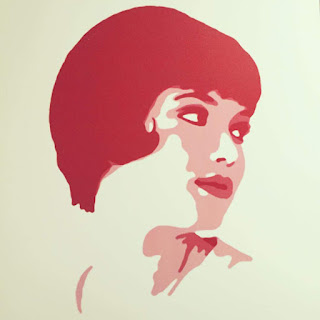Federico Fellini's 1963 surrealist cinema masterpiece
8 1/2 lets us know within four minutes that we are in for a profoundly unique viewing experience. The first shot of the film's main character, Guido Anselmi, is from behind as he sits at the wheel of his car in an endless traffic jam. The camera then moves with serene fluidity across the top of the car to show a bus. Passengers of the bus hang their arms from the windows lifelessly - we do not see their heads. Inside of Guido's car a gas of some sort emits from the glove box. Guido struggles to get out of the car. Passengers of the other cars watch him with silent indifference. There are no car horns, no chatter, just silence.
Guido kicks in the passenger window of his car and then floats above the traffic jam, spreading his arms like a messiah as he drifts through the clouds and above a beach, only to find a rope tied around his foot and at the end of the rope, on the beach, someone is flying him like a kite.
CUT TO: A dark room where a hand suddenly reaches up and a man YELLS! A doctor enters the room and we see Guido awaking from a nightmare. He looks haggard and exhausted. We learn that Guido is a famous Italian director retreating to a Spa for a sabbatical while he gets his frazzled mind together and attempts to prepare for his next film project. The length of his stay in unknown and his condition is obvious. He is a man in the verge of a nervous breakdown
 |
| Marcello Mastroianni as Guido |
Fellini applied make-up and streaks of white hair to transform the handsome Marcello Mastroianni into the frail Guido. But make-up aside, the performance is all Mastroianni. As the frantic and overwhelmed Guido, greeted daily by hordes of people who have come to interrupt his sabbatical, Mastroianni is a joy to watch. Guido juggles his agent, his screenwriter, actors, and his producer - all of whom want to know what his next movie is going to be about and when it is to commence. The dilemma Guido faces is that he doesn't know.
 |
| Director Federico Fellini |
Fellini brings Guido's crumbling world of chaos to us in stunning black and white with a revolving camera in a constant state of motion. Actors parade into frame and out of view as the camera becomes a character; an objective and subjective viewer that doesn't show us reality but the reality of Guido's mind. The Characters from Guido's past interact freely with the characters in his present. Guido averts his attention from one to the other while the camera moves in whirling circles. When the women of Guido's life come to visit, they too are treated as equal and expendable characters in his life's film. His wife, mistress, and lead actress (also a mistress) enter and exit with the same importance. Guido cannot choose between them anymore than he can decide what his next project must be.
 |
| Claudia Cardinale as Guido's actress Claudia | | |
|
|
Only Claudia, his leading actress, can see past the confusion and circus that Guido purposely concocts to divert his onlookers. Her eyes look at us the audience with a knowing, mischievous grin. Actress Claudia Cardinale, like Mastroianni, provides a wealth of information through her expressions. She is the only one who can see the real Guido, the Guido behind the director. And as we the audience sense this, we can't help but wonder which Guido we are perceiving. Or, is there a "real" Guido at all? Maybe his unreality is actually him. A man trapped inside his own vision of what the world is. Such questions are only part of the fun. The real fun is the ride of
8 1/2 and it is a ride that doesn't slow down.
 |
| Guido the director |
Last year when I watched the Oscar Winning
Birdman starring Michael Keaton, it was impossible not to think of
8 1/2. Keaton's character goes through a similar mid-life crisis/breakdown that is filmed with no distinct line between the real world and hallucination.
Birdman captures the world of theater rather than the world of film, but the influence of
8 1/2 is undeniable. Director Alejandro G. Inarritu even uses Fellini's concept of a camera in motion to sever connections between illusion and reality.
8 1/2's influence can also be seen in the following recommended films: Bob Fosse's
All That Jazz, Woody Allen's
Stardust Memories and
Midnight in Paris, David Cronenberg's
Naked Lunch, Terry Gilliam's
Brazil and
Fear And Loathing In Las Vegas, David Lynch's
Erasherhead, and Danny Boyle's
Trainspotting.
 |
| Michael Keaton and his "imaginary" Birdman self |
|
(
8 1/2 is now streaming on Hulu!)





































